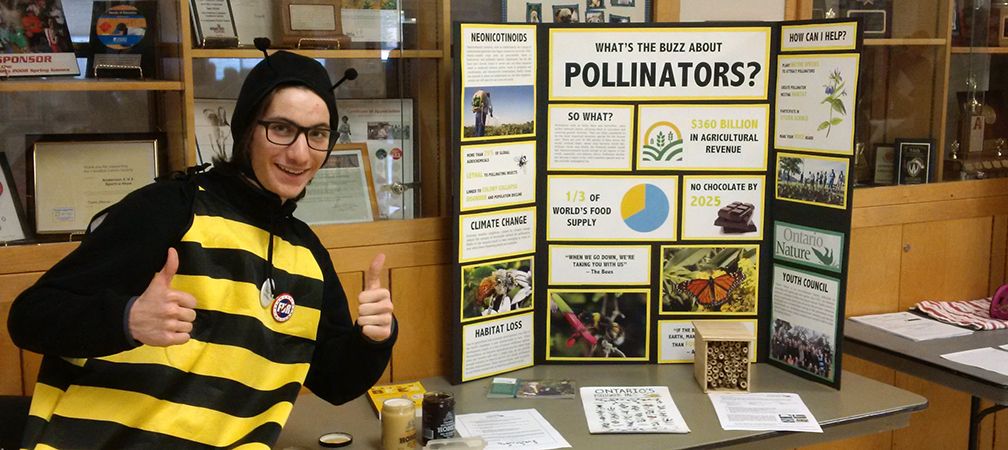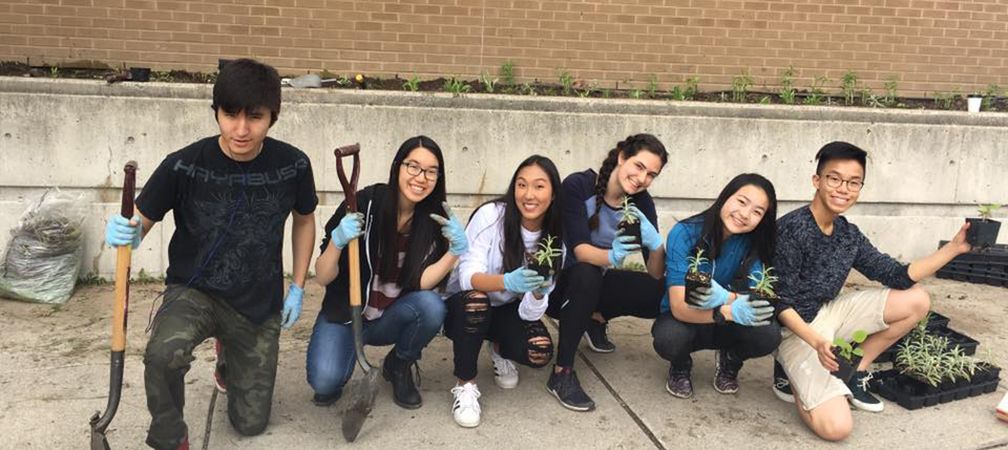Ontario Nature Blog
Receive email alerts about breaking conservation
and environmental news.
© Lora Denis
Students planting pollinator-friendly wildflowers, Anderson Collegiate, Whitby © Aidan Brushett
Students across Ontario are leading the sustainability movement: they organize eco-clubs, launch recycling programs, and run green campaigns. But while school boards promote environmental values, student-led sustainability often receives little real support. The gap between school policy and student action reveals how eco-clubs are carrying the weight of climate leadership and the urgent need for institutional support in Ontario’s schools.
Sustainability is often discussed at the board level, yet many school policies fail to result in real change on the ground. While Earth Week activities are promoted each spring, year-round student initiatives often go unnoticed.
Recycling programs are launched but not maintained. Innovative green projects are developed by eco-clubs, yet without staff buy-in or school-wide accountability, their impact remains limited.

Despite these challenges, students continue to push forward. A survey of 300 Ontario teachers found that key barriers to sustainability education include overcrowded curricula, limited resources, and the low priority placed on environmental learning.
These findings mirror the frustrations of student organizers: eco-clubs often lack funding, support from staff, and school-wide engagement. While their work is powerful, they’re expected to take on climate leadership without real institutional backing.

If sustainability is truly a priority, schools need to go beyond posters and one-off events. Here are four specific ways they can support student-led environmental action:
Schools should allocate annual funding for eco-clubs—covering materials, campaign supplies, and participation in sustainability conferences. Student leaders shouldn’t be forced to fundraise just to operate.
Green teams should have a seat at the table during school planning meetings related to facilities, events, or curriculum planning. This gives students a formal voice instead of treating them as optional contributors.
Subjects like science, geography, business, and even art can integrate environmental learning. A cross-curricular approach ensures all students, not just club members, engage with climate issues meaningfully.
Schools should commit to measurable goals (e.g.: reducing paper use by 50%, eliminating single-use plastics in cafeterias, installing LED lighting), and publicly report on their progress to create accountability.
These changes are practical, actionable, and can be implemented today. Symbolic gestures aren’t enough — students need long-term, structural support.

Sustainability in schools shouldn’t depend on a few passionate students fighting against the odds. It should be a shared priority — backed by resources, recognition, and real collaboration.

Lakeside daisy, Saugeen Alvar Nature Reserve © Noah Cole
This is such an important topic. I taught at the elementary level – so staff/adult leadership was the driving force for any action. Kids do not always feel empowered and have little agency without staff support in elementary schools. So when the staff who invite interest and action on sustainability leave – the opportunities also decrease. Environmental initiatives should not be dependent on staff “interest” or “passion”. These are things we should all be doing. To me…It’s criminal that some schools don’t even recycle ( the most simple and basic action- it’s really in my opinion …a beginner level action). We need to create spaces that insist on participation as part of just being a breathing member of the planet. This is the responsibility of everyone and that should be the message from caretaker to principal. Everyone is taking action for a whole and healthy planet. No excuses- just celebrating the possibilities of living every moment with every step on this beautiful planet.